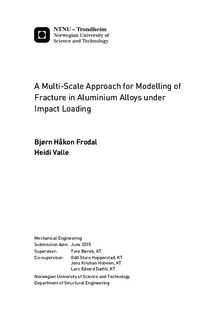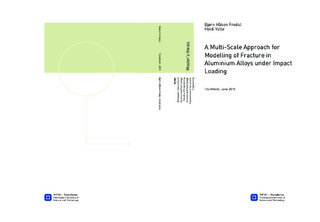| dc.description.abstract | The main objective of this thesis was to investigate the ballistic properties of an isotropic AlMgSi aluminium alloy both experimentally and numerically. Uncoupled and coupled fracture models were calibrated using micromechanical unit cells and existing material data, to model ductile fracture in the alloy.
Ballistic impact experiments were conducted on 30 mm thick plates at the Departement of Structural Engineering at NTNU, using the steel core of 7.62 mm APM2 bullets. The Recht-Ipson model was used to obtain the ballistic limit curve, and good correspondence was seen between the curve and the experimental results. Ductile hole growth proved to be the dominant failure mechanism for all tests, with negligible fragmentation.
Simplified two-dimensional micromechanical cells were analysed for different Lode parameters and triaxialities, to calibrate the Cockcroft-Latham, Johnson-Cook and Gurson-Tvergaard-Needleman (GTN) failure models. The calibrations were done with either a von Mises yield criterion or GTN in the matrix material, resulting in lower failure strains for the latter.
Numerical analyses of the ballistic impacts were conducted in both IMPETUS Afea Solver and Abaqus/Explicit. A parameter study investigating the effects of strain rate, temperature and friction, concluded that friction had the largest influence on the ballistic limit velocity. Abaqus analyses gave the overall best correspondence with the experimental data, with only minor deviations between the fracture models. These deviations were probably due to the dominating temperature erosion criterion. Larger differences were seen between the models for the IMPETUS analyses. Both IMPETUS and Abaqus were able to recreate the deformation pattern seen in the experimental tests. The use of micromechanical cells for numerical modelling of ductile fracture is considered promising. | |

